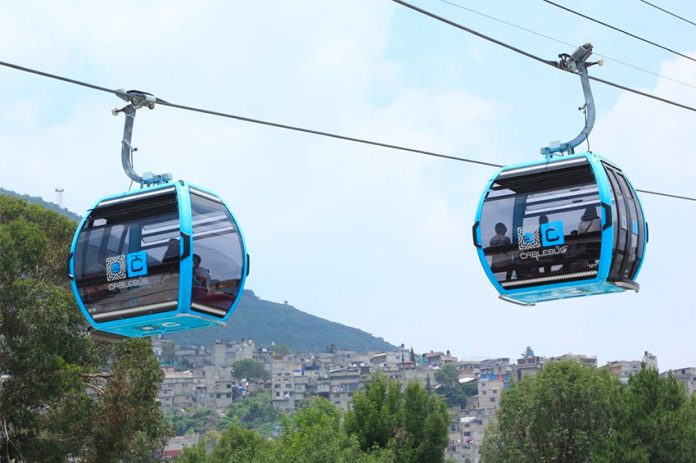In the Valley of México, home to more than 20 million people, almost 25 kilometers of cable car lines now form part of the skyline.
Two cable cars, soon to be three, transport thousands of passengers from elevated areas to more central, better connected locations.
Development of cable car lines shows no sign of abating: another line is under construction, and two more are under consideration.
In the north of Mexico City, the new Cablebús system has introduced the airborne transport. Line 1 went into full operation on June 11, connecting the Gustavo A. Madero borough to the Indios Verdes Metro and bus station. It has registered 56,000 users per day compared to the 48,000 predicted, which makes it the second most used cable car in Latin America, even by pre-pandemic numbers, according to city officials.
Line 2 of the Cablebús will be put into service in a matter of days. At 10.2 kilometres, with 308 cabins, the line will be the longest in Latin America and will connect residents in Iztapalapa to the Metro stations of Santa Marta and Constitución de 1917.
The first cable car in the Valley of México was the Mexicable in October 2016, north of the capital in Ecatepec, state of México. The line has seven stations and 185 cabins and runs over the Mexico-Pachuca highway, to the neighborhood of La Cañada.
A new 8.2-kilometer line is under construction in Ecatepec, which is 70% complete. Mexico City Mayor Claudia Sheinbaum has stated that there is discussion about a new cable car service in the west of Mexico City in Naucalpan and another in the southwest of the city to connect the neighborhoods of Magdalena Contreras and Tlalpan.
When the first section of Line 1 of the Cablebús was opened on March 4, Sheinbaum attested to the social benefit the form of transport would provide. “It’s a historic day because we’re opening a new system of collective transport … it’s social transport … Having the best transportation for the poorest parts of the city reduces inequality,” she said.
However, sustainable development expert at Tec de Monterrey university, Mariajulia Martínez Acosta, urged caution on transportation infrastructure, saying that all options should be considered. “They [cable cars] are in vogue … they are solving very immediate mobility problems, but in the long term we do not know if it will really have a positive impact, or if in a year only one person will travel per cabin,” she said.
“I think it would be good to know the cost-benefit analysis of increasing the cable car network … Yes they are a solution, they promote mobility and bring [elevated] neighborhoods closer, but it’s not all about having the skyline full of cable cars. We should look at which transportation options can have the greatest impact. I understand that developing a cable car is cheaper than a Metro line, but the impact that a Metro network can have is greater,” she added.
With reports from Forbes México
